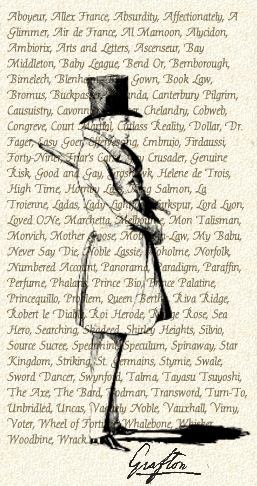|
|
The Dukes of Grafton
 |
|
By Patricia Erigero |
Almost every thoroughbred alive today has multiple lines tracing back to the horses bred by Augustus Henry Fitzroy and George Henry Fitzroy, third and fourth Dukes of Grafton. The bloodline dynasties founded by Fitzroy and his son are due almost entirely to the third Duke's purchase of the seven year old mare, Julia (Blank-Partner mare) in 1763, and her subsequent production of two fillies, Promise (1768), by Snap, and Princess (1769) by Herod. The daughters of these mares, also bred at the Grafton stud at Euston Hall in Suffolk, Prunella (1788, Highflyer-Promise) and Puzzle (1778, Matchem-Princess) are the two mares largely responsible for the recognized racing success of Bruce Lowe Family Number 1. Sons and grandsons bred from these mares at Euston went on to found their own influential sire lines, most notably Whalebone and Whisker.
The Dukes of Grafton had a profound, perhaps the most profound influence on the nature and development of thoroughbreds in the history of the breed. The impact of their breeding program was a result of a convergence of circumstances and characters within a particular time frame that leads to change.
The characters were the two successive dukes, with their vast wealth, political influence and keen interest in the field and turf; their stable managers John Wastell, and, later, Rev. Lord Henry Fitzroy (a half-brother), and the noted trainer Robert Robson and several good jockeys. And, of course, the horses, of whom the two most significant, then and now, were Prunella, to whom so many classic winners trace in tail-female descent, and Whalebone, her fifteen-hand bay grandson (1807, Waxy-Penelope), whose influence, as reflected in the General Studbook is deep and wide.
|
The circumstances were such as are unlikely to occur again in the thoroughbred world. The thoroughbred racehorse population in the latter half of the eighteenth century was tiny, compared to the tens of thousands of thoroughbreds today; the annual foal crops consisted of no more than a few hundred then, compared to over 100,000 thoroughbred youngsters now born each year. A successful match of mare and stallion then, backed by wealth and influence and further reinforced by breeding to the best for successive generations, could and did have an enormous influence on a small population; even the wealthiest breeder with the best bloodstock could hardly hope to have such an influence on the gene pool today.
In addition, the nature of racing was changing, shifting from tests of mature endurance to those of speed and precocity. From match races run in heats at two to four miles or more, the length of races was being shortened and offered to younger horses. The first running of the St. Leger, held over two miles for three year olds, was in 1776. The first running of the Derby Stakes, initially a mile in length and also limited to three year-olds, was held in 1780, and rapidly became the gauge for assessing thoroughbred racing ability. These changes both reflected and influenced the types of horses being bred. The third Duke of Grafton sat on this cusp with his Herod, Matchem, and Eclipse influenced mares, and with access to (and later purchase of) the Eclipse-Herod influenced Waxy (Pot-8-Os - Maria x Herod). That nick brought both Dukes an amazing number of classic winners in the next few decades, and the rest of us speedier horses over shortened distances.
| | 
George Henry Fitzroy, the Fourth Duke of Grafton, shown here, and his father, the Third Duke, cast a long shadow on thoroughbreds, a few of whom descended via tail-female from Prunella and Puzzle are listed. The caricature is from the New Sporting Magazine,1833.
|
|

